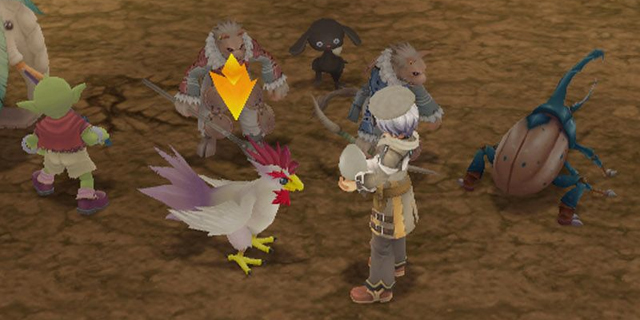
Tides of Destiny, originally branded Rune Factory: Oceans in Japan, is the follow-up to the Wii-only Rune Factory: Frontier. Known for their being a more magical, fantasy take on sister series Harvest Moon’s realistic (though still often fantasy) farming simulation, this new Rune Factory looks to change things up within the series, introducing and changing core elements in the series to flesh out others, including combat, exploration, and for the first time, the ability to choose between a male and a female protagonist.
In a series first, Tides of Destiny opts for a full-3D presentation, scrapping the 2D portraits normally used during dialog for animated 3D models. The game still retains the series’ charm and cute presentation regardless, as it spends the first few hours introducing you to its new set of varied and quirky characters. You’re slowly eased into the game’s controls, which also includes another series first: the ability to jump. Combat is fluid and fun to watch in action, borrowing from Rune Factory 3’s quick-paced combat styling rather than Frontier’s slow actions.
By far the most drastic change in the series involves the farming, as developer Neverland introduces a simplified take on the mechanic. Rather than the typical “plant seeds, water crops, harvest when fully matured” gameplay and simplified it, as you instead use a magic want to instantly plant and water seeds in pre-selected farming points. You need to use any monsters you’ve tamed to grow them, with specific monsters raising different crops out of the seedlings planted. Your only real job is to use the wand to plant the seeds, keep the monsters fed, and harvest whatever grew. This seems like a setback from the more expanded crop raising in previous games, but it’s actually a nice, quicker way to grow crops and produce the same result. You’ll still end up spending the same amount of time harvesting as your area of production expands and you have several locations to manage.
The shift in farming is mostly attributed to the new exploration aspect. After a few days go by in the game, you’re acquainted with a gigantic golem that’ll take you across an enormous ocean range. The golem has its own set of HP and stats, which improve as you fight giant creatures, explore the seas and raise islands from the bottom of the waves. These can be either new locations to grow crops or mine for materials, islands for story progression or relics with treasure and monsters to find. You’re usually pointed toward the story-related ones, but most of the other islands are flat-out hidden and require wading through the seas to find, which would be tedious were it not for a convenient quick-walk system that allows you to blaze through the seas in no time at all.
Tides of Destiny brings back RF3‘s request board for performing villager quests and the like. You can accept and complete as many requests as you want every day, even canceling any request without losing it in case you don’t feel like performing it at the time. It also borrows the teleport button from Rune Factory Frontier, which instantly warps you back to your house or outside a ruin and costs nothing to use. Coupled with the game’s lightning-fast load times, you can very easily zip from one side of the game’s main village, warp to your Golem, swim across the seas, warp back and do more island requests in a matter of minutes. It’s quick, painless and severely cuts down on the time spent doing nothing in the game.
If there’s one glaring oversight to the game though, it’s that outside of teaching you basic controls, the game doesn’t really spend enough time telling you what to do and where to go. Because you don’t have access to a farm immediately, even veteran players will feel a little lost when the game asks you to track some form of colored grass, one of the more common items in the series, only to have no idea where to find any. Even the exploration can feel a little aimless at times, as there’s very little incentive to explore areas other than where you’re told to go by requests. This is mitigated as you poke around and learn where everything is, but it’s still worth nothing as something that bogs down the earlier parts of the game.
Tides of Destiny is a great entry in the series, building up on the very flawed Rune Factory: Frontier and showing that the series does have a place on consoles. The streamlining and optimization makes it a great starting point for newcomers to the series, as well as a fresh experience for series veterans.
Pros: Easy to pick up, charming visuals, fast-paced combat.
Cons: Not enough early explanation, takes a while for the game to pick up steam.



















